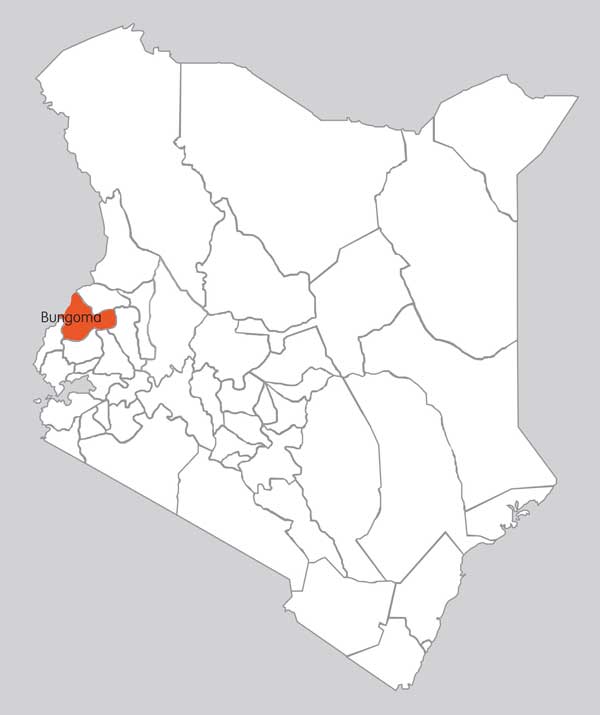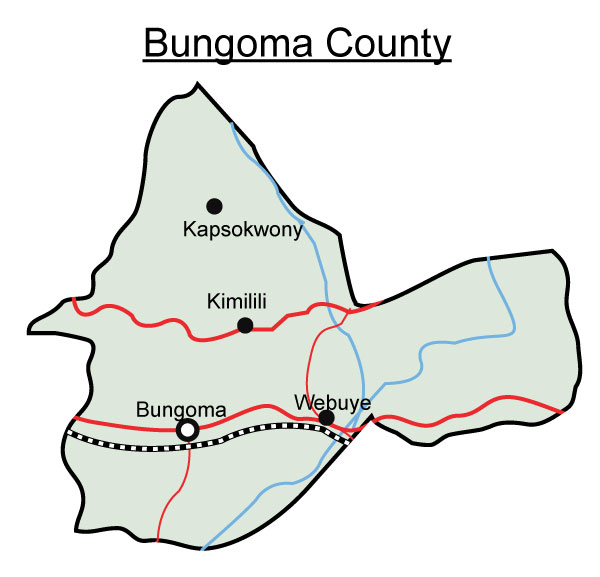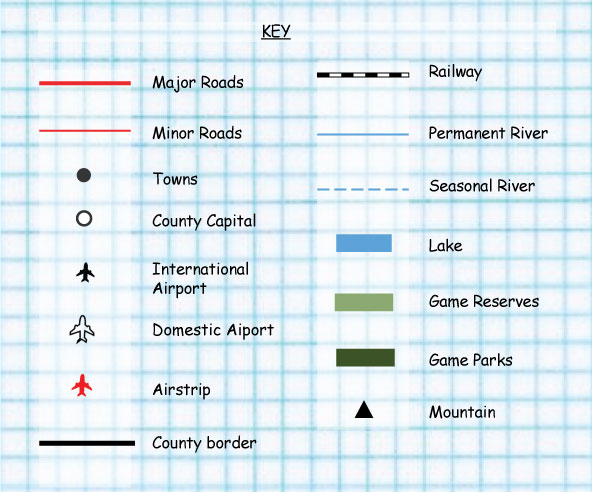It is in the former western province. Its capital is Bungoma Town. It has a population of 1,375,063. It neighbours Mount Elgon. It is mainly agricultural and the people here are mainly Christians.

Rivers
Mountains

Mount Elgon forest

Mount Elgon forest birds

Hills


The Bukusu are the occupants of this county.
There are a variety of foods in the Bukusu culture. These include ugali (a product of maize mill flour). Chinunga, a traditional leafy green that is made up of corn ash, chiswa, raw white termites, and lastly bubwoba, the traditional mushrooms.
The main clothing by the Bukusu community is the esukuti. Esukuti is usually made from sisal fibers, and is wore during the time of weddings and circumcision ceremonies. Another very common clothing worn by the Bukusu people is the clothing known as Lichabi. The Lichabi is a common traditional clothing worn by the Bukusu people. The Lichabi is usually made from leopard skin and is worn during the times of ceremonies such as the circumcision ceremony and many more. The lichabi is commonly worn by the elders of the community. Moreover there is a common clothing known as the lileso. The Lileso is usually made from common clothing materials and is mainly worn by the elder women of the community. The most common clothing among the Bukusu is the esukusi, it was worn by elders during weddings on the head.
The most common music and dance was called the Esukuti. The music is well know because it had the right beat to dance and listen to this music which brought excitement and a happy feeling that made you want to dance to it. This piece of music has been there for a long time, it was pasted on by their ancestors through fables and stories that ware told. The music was common in the east African and is very well known throughout east Africa as well as places like Mombasa. The Bukusu culture was listened to when doing household duties. In the eskuti the main instruments that are usually used are the tambourine, drums and whistles.
They are Special medicine men in the community who were entrusted with this role. They hold a high rank in the society. The medicine men were responsible for healing. It was considered a special gift. They used herbs gathered from the forest.
Ceremonies
The bukusu people name their new born babies according to sikuka (inherited names), cultural practices, and character (kumwima). The ‘sikuka’ names are names of ancestors who were respected in society. A parent does not choose the name for a child but the child will automatically cry meaning a particular ancestral spirit is disturbing the baby wanting the baby to be named after him/her. When the child cries during the day, it means the ancestor who wants to be named comes from the mother’s side. When the baby cries non-stop at night, it means the ancestor who wants to be named comes from father’s side.
When a male boy feels that he is ready for initiation, he approaches his father who prepares the required materials that are necessary for the ceremony, which include; a male bull or a he goat, traditional beer called kamalwa, the circumciser and a small house called Likombe for the boy.
The boy gets the jingles ready to play. They are played by the boy as people sing and dance for him during the entire process called Khulanga (calling).
He plays them calling on relatives from near and a far. During the process, those who are approached by the boy must give something in appreciation and they must attend or be present during the circumcision day. If for instance the boy avoids a relative, then the relative feels bad and launches a complain.
It was treated as a ceremony to celebrate a good season. Songs and dances followed, they called them the chiswa harvesting songs.
Naming of children was also dependent on this children born during a Harvest season
Music was an important part of the life of the Luhya. Children sing songs and dance for play and (especially boys) when herding livestock. Occasions such as weddings, funerals, and circumcision ceremonies all call for singing and dancing. Musical instruments include drums, jingles, flutes, and accordions. The Luhya are nationally renowned for their energetic and vibrant isukuti dance, a celebratory performance involving rapid squatting and rising accompanied by thunderous, rhythmic drumbeats.
Main cash crops and food crops grown
Farmers plant food crops like maize, beans, sorghum, bananas, sweet potatoes, cassava, groundnuts several fruits and vegetables, and also cash crops like sugarcane, coffee and tobacco.
Areas where the cash crops are grown
Types of livestock kept
Areas where fishing is practiced
Fishing is practiced in the rivers and in local ponds along rivers.